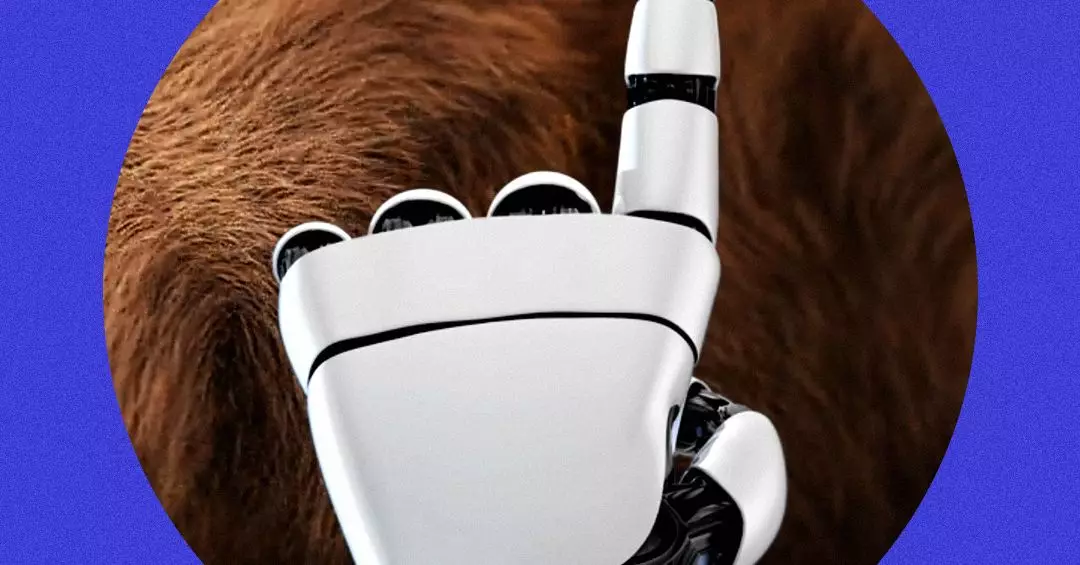In a bold stride into the realm of robotics, Amazon has introduced Vulcan, a state-of-the-art warehouse robot designed to enhance its fulfillment operations through advanced tactile capabilities. Unlike conventional robots that exhibit clumsy, automated actions, Vulcan harnesses the power of touch to specialize in a task that has traditionally relied heavily on human dexterity: retrieving and sorting products from shelves. This innovation represents a vital pivot towards a future where robots possess refined sensitivity akin to that of human handlers, paving the way for broader applications in fulfillment and manufacturing sectors.
Empowering Human-Robot Collaboration
Aaron Parness, Amazon’s director of robotics AI, is at the forefront of this initiative, emphasizing the importance of touch sensing in enabling Vulcan to effectively navigate through shelves crowded with varying products. “When you’re trying to stow or pick items in one of these pods, you can’t really do that task without making contact with the other items,” Parness explains. This function is critical, as it allows the robot to engage with its environment in a way that mimics human touch, a feature essential for sorting and picking unique items from a chaotic assortment.
Vulcan achieves its dexterity through a specially tailored robotic arm equipped with a spatula-like appendage designed for probing and a suction mechanism for grasping items. This intricate design, complemented by sensors strategically placed on its joints, enables Vulcan to detect the shape and edges of various products, enhancing its operational efficacy. It’s a marked improvement over previous robotic systems that faced considerable limitations due to their lack of touch sensitivity.
The Role of Machine Learning
At the heart of Vulcan’s functionality is an advanced machine learning algorithm that interprets signals from its sensors, weaving these insights into a responsive decision-making framework. Parness refers to this sophisticated interplay of software and hardware as “the special sauce,” a blend of force torque interpretation embedded within a control loop that directs the robot’s movements. This aspect of Vulcan’s design underlines the rising symbiosis of artificial intelligence and robotics, as the system continues to learn and evolve through its experiences.
Vulcan is not merely an experimental tool; it is actively integrated into Amazon’s operational framework. The robot is currently deployed in fulfillment centers in Hamburg and Spokane, seamlessly working alongside human pickers. This collaborative model aims to alleviate the physical strain on human workers, particularly in demanding tasks involving objects stored at varying heights. When Vulcan encounters items that it cannot retrieve, these tasks are delegated back to human workers, showcasing an intelligent system of distribution that recognizes and acknowledges human capabilities.
The Future of Robotics in Automation
Ken Goldberg, a noted roboticist from the University of California, Berkeley, provides perspective on Vulcan’s significance within the broader landscape of robotic technology. While acknowledging the rapid advancements in robotic touch sensing, Goldberg poignantly notes that current technologies still lag far behind the incredible capabilities of human tactile perception. “The human sense of touch is extremely sensitive and complex, with a huge dynamic range,” he states, cautioning that the goal of achieving human-equivalent sensitivity in robotics remains ambitious.
Despite this, there is palpable excitement surrounding Vulcan’s potential to expedite the automation of tasks historically reliant on human effort. As Amazon continues to ramp up its automation initiatives—integrating AI-driven robots that excel at transporting and organizing products—Vulcan stands testament to the company’s commitment to efficiency and innovation. However, Parness also articulates a balanced viewpoint regarding the role of robots, asserting, “We don’t really believe in 100 percent automation, or lights-out fulfillment.” This reflects a keen understanding of the intrinsic value of human workers, ensuring that the future of Amazon’s operations remains a collaborative effort between machines and people.
As technology evolves, the emergence of touch-sensitive robots like Vulcan signals a transformative shift that could redefine logistics and fulfillment. Their ability to mimic human dexterity not only enhances operational efficiency but also highlights the continuous journey towards harmonizing advanced technology with human skills. The integration of human-like qualities into robotic systems may very well be the key to unlocking the full potential of automation while preserving the indispensable contributions of the human workforce.

